Don’t Underestimate The Importance Of Phytoplankton!
Don’t underestimate the importance of phytoplankton!

9 Ocean Facts You Likely Don’t Know, but Should
Earth is a place dominated by water, mainly oceans. It’s also a place our researchers study to understand life. Trillions of gallons of water flow freely across the surface of our blue-green planet. Ocean’s vibrant ecosystems impact our lives in many ways.
In celebration of World Oceans Day, here are a few things you might not know about these complex waterways.
1. Why is the ocean blue?

The way light is absorbed and scattered throughout the ocean determines which colors it takes on. Red, orange, yellow,and green light are absorbed quickly beneath the surface, leaving blue light to be scattered and reflected back. This causes us to see various blue and violet hues.
2. Want a good fishing spot?

Follow the phytoplankton! These small plant-like organisms are the beginning of the food web for most of the ocean. As phytoplankton grow and multiply, they are eaten by zooplankton, small fish and other animals. Larger animals then eat the smaller ones. The fishing industry identifies good spots by using ocean color images to locate areas rich in phytoplankton. Phytoplankton, as revealed by ocean color, frequently show scientists where ocean currents provide nutrients for plant growth.
3. The ocean is many colors.

When we look at the ocean from space, we see many different shades of blue. Using instruments that are more sensitive than the human eye, we can measure carefully the fantastic array of colors of the ocean. Different colors may reveal the presence and amount of phytoplankton, sediments and dissolved organic matter.
4. The ocean can be a dark place.
About 70 percent of the planet is ocean, with an average depth of more than 12,400 feet. Given that light doesn’t penetrate much deeper than 330 feet below the water’s surface (in the clearest water), most of our planet is in a perpetual state of darkness. Although dark, this part of the ocean still supports many forms of life, some of which are fed by sinking phytoplankton.
5. We study all aspects of ocean life.

Instruments on satellites in space, hundreds of kilometers above us, can measure many things about the sea: surface winds, sea surface temperature, water color, wave height, and height of the ocean surface.
6. In a gallon of average sea water, there is about ½ cup of salt.

The amount of salt varies depending on location. The Atlantic Ocean is saltier than the Pacific Ocean, for instance. Most of the salt in the ocean is the same kind of salt we put on our food: sodium chloride.
7. A single drop of sea water is teeming with life.

It will most likely have millions (yes, millions!) of bacteria and viruses, thousands of phytoplankton cells, and even some fish eggs, baby crabs, and small worms.
8. Where does Earth store freshwater?

Just 3.5 percent of Earth’s water is fresh—that is, with few salts in it. You can find Earth’s freshwater in our lakes, rivers, and streams, but don’t forget groundwater and glaciers. Over 68 percent of Earth’s freshwater is locked up in ice and glaciers. And another 30 percent is in groundwater.
9. Phytoplankton are the “lungs of the ocean”.

Just like forests are considered the “lungs of the earth”, phytoplankton is known for providing the same service in the ocean! They consume carbon dioxide, dissolved in the sunlit portion of the ocean, and produce about half of the world’s oxygen.
Want to learn more about how we study the ocean? Follow @NASAEarth on twitter.
Make sure to follow us on Tumblr for your regular dose of space: http://nasa.tumblr.com.
More Posts from Simplyphytoplankton and Others
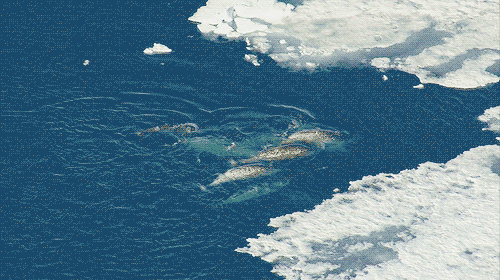



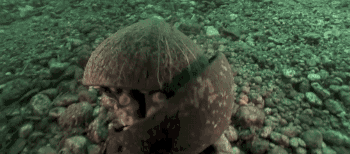
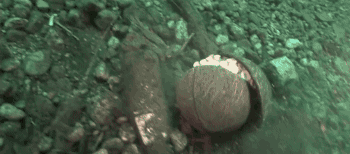
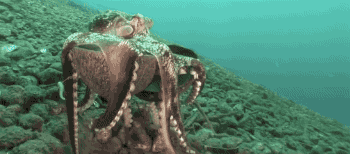




Hatfield Marine Science Center:
Sashay the Pacific Giant Octopus Gets Released Sashay, our stunning and extremely friendly Visitor Center octopus was released back into the wild on November 26th. After being gently introduced into the Yaquina Bay, she temporarily crawled onto land. This gave her human fans a final opportunity to say goodbye.
This type of behavior has not been seen at any of our previous releases and was an unforgettable moment for all who witnessed it. While it was difficult to bid this beautiful animal adieu, we want our octopuses to have the opportunity to reproduce and finish their lives in the wild. We hope you enjoy these photos!
Photos by Volunteer James Upton

An oceanic phytoplankton bloom in the South Atlantic Ocean. Phytoplankton blooms usually occur where cold water rushes up from the bottom of the ocean carrying nutrients to sunlit waters.
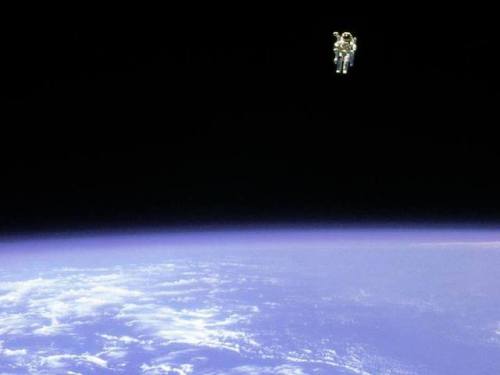
Meet Bruce McCandless. He was a bit of a bad-ass. In 1984, Bruce was aboard the Challenger Space Shuttle and became the first human to walk in space without a safety line. By utilising a nitrogen propelled Manned Maneuvering Unit (MMU), he stepped free from Challenger into the blackness of space for a 90-minute space walk and wandered as far as 97 meters from the ship. The result is this amazing image which captures ingenuity, innovation and most certainly bravery.
Bruce McCandless died yesterday at the age of 80.
-Jean Image Credit: NASA
What’s a whale fall?






Whale falls can be found throughout the ocean. This one was spotted in Channel Islands National Marine Sanctuary, off the coast of Southern California!
GIF transcript beneath the cut.
Keep reading




Mid Air Mid octopus
But without primary producers (phytoplankton) there would be no krill

They’re krilly small and unassuming, but krill form the backbone of many ocean ecosystems!
These tiny crustaceans consume phytoplankton, and in turn are food for whales, fish, and other marine animals. During their peak feeding times, blue whales can eat up to 8,000 pounds of krill each day!
(Photo: Maps For Good, taken in Greater Farallones National Marine Sanctuary)
-
 elegantlyenchantedstubbornfool liked this · 2 weeks ago
elegantlyenchantedstubbornfool liked this · 2 weeks ago -
 00captainbalboa liked this · 1 year ago
00captainbalboa liked this · 1 year ago -
 simulite liked this · 1 year ago
simulite liked this · 1 year ago -
 seren1tiff liked this · 1 year ago
seren1tiff liked this · 1 year ago -
 markwickens liked this · 1 year ago
markwickens liked this · 1 year ago -
 domquixotedospobresblog liked this · 1 year ago
domquixotedospobresblog liked this · 1 year ago -
 workpanoto liked this · 1 year ago
workpanoto liked this · 1 year ago -
 thereisanother liked this · 2 years ago
thereisanother liked this · 2 years ago -
 bloodtohold liked this · 2 years ago
bloodtohold liked this · 2 years ago -
 luzazuladah liked this · 2 years ago
luzazuladah liked this · 2 years ago -
 rede3pl liked this · 2 years ago
rede3pl liked this · 2 years ago -
 littlebunnyman reblogged this · 3 years ago
littlebunnyman reblogged this · 3 years ago -
 machet-t-omniversal liked this · 3 years ago
machet-t-omniversal liked this · 3 years ago -
 cats-are-a-girls-bestfriend reblogged this · 3 years ago
cats-are-a-girls-bestfriend reblogged this · 3 years ago -
 cats-are-a-girls-bestfriend liked this · 3 years ago
cats-are-a-girls-bestfriend liked this · 3 years ago -
 haml3t liked this · 3 years ago
haml3t liked this · 3 years ago -
 ratspiral liked this · 3 years ago
ratspiral liked this · 3 years ago -
 rnangopantsu reblogged this · 3 years ago
rnangopantsu reblogged this · 3 years ago

Blog dedicted to phytoplankton. Phytoplankton are microscopic organisms that are responsible for half of the photosynthesis that occurs on Earth. Oh, and they look like art... Follow to learn more about these amazing litter critters! Caution: Will share other ocean science posts!Run by an oceanographer and phytoplankton expert. Currently a postdoctoral researcher.Profile image: False Colored SEM image of Emiliania huxleyi, a coccolithophore, and the subject of my doctoral work. Credit: Steve Gschmeissner/ Science Photo Library/ Getty ImagesHeader image: Satellite image of a phytoplankton bloom off the Alaskan Coast, in the Chukchi SeaCredit: NASA image by Norman Kuring/NASA's Ocean Color Web https://earthobservatory.nasa.gov/images/92412/churning-in-the-chukchi-sea
158 posts